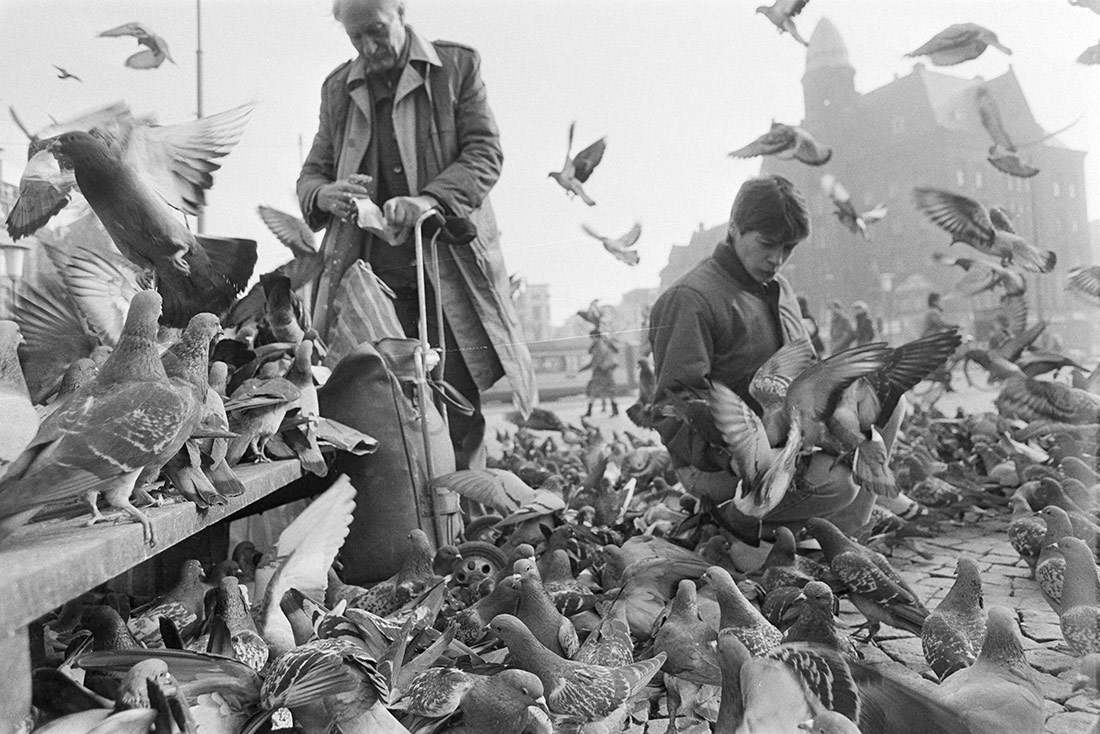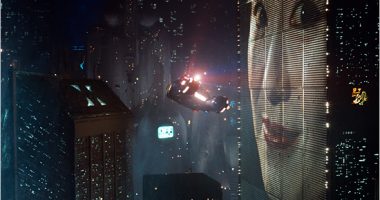
Pigeons in a square. Amsterdam, 1984 | Nationaal Archief | Public domain
Policies for integrating nature into cities are often developed with health in mind. But the creation of urban green spaces tends to favour certain aesthetic and social ideals while leaving out unexpected or marginal forms of nature. Beyond domestic greenery, a multi-species city must embrace coexistence with diverse forms of life.
In his book The Living City, the sociologist Des Fitzgerald looks at the ways in which nature has been channelled to bring about different social projects – from ideas of the city as a place of stress and ill health, to a garden that we can shape to improve our lives. In this regard, ideas about nature and cities are closely linked to those about health – from an idealised concept of nature as the place where we go to escape the city and infuse ourselves with wellbeing, to projects with a sweeping scope to reintroduce nature into cities and remedy the consequences of our supposed disconnection from the natural state of the world we inhabit. Given this aversion to cities, it is not surprising, for example, that during the pandemic, cities were associated with having the perfect ecological conditions for viral spread and reproduction. The result was similar to other pandemics throughout history – the most affluent sectors of society moved out to their second homes in other parts of Catalonia, places in natural areas generally understood as the antithesis of the city. Even within the city itself (as explored in the 2024 CCCB exhibition Suburbia), city suburbs have been home to both insalubrity and lack of services, as well as gardened areas and residential developments where people can escape the stresses of city life.
Meanwhile, the social sciences have generated a great deal of research on policies for reintegrating nature into cities, including critical analyses of the pros and cons of urban greening policies. Far from being a cure-all, the consequences are unfairly distributed, often reproducing and exacerbating structures of socioeconomic inequality. This research draws on a tradition that has worked to denaturalise the way nature is laid out and produced in the city. This ranges from toxic nature such as urban landfills and chemical industries – a phenomenon that resulted in the environmental racism movement in the United States after the publication of Robert D. Bullard’s book Dumping in Dixie – to the construction of green spaces that promised to improve peoples’ health but have also led to a rise in housing prices as a result of gentrification.
For the most part, however, debates on creating greener cities to improve the health of their citizens have focused on both the determinants and the impacts of these policies on the city’s human inhabitants. For example, we have all been informed ad nauseam about the shade and temperature regulation that trees provide in cities to mitigate the heat island effect. Different urban spaces, such as Parc de Joan Miró – a park in Barcelona created on the site of a former slaughterhouse – have been transformed into recreational areas and paradigmatic examples of the city of the future. In most of these projects, however, the result is often to benefit not only one type of human, but also one type of green and one type of associated health benefit. What these projects all have in common is that they are usually a minority in terms of the cityscape as a whole, but a majority, and “normal,” within the surrounding discourses.
In relation to these “minority” and “majority” green areas in cities, hegemonic greening processes are often based on quasi-biblical ideas around “making the desert bloom” – transforming concrete and asphalt into soil, roots and foliage. The reality, however, is that the metaphor of creating urban nature from nothing is not very accurate. Like any other intervention in public space, it is a question of turning types of nature considered to be of low value into new natures with greater aesthetic and economic value. Furthermore, these changes do not occur on a single geographical scale. For example, on a local scale, we find new green infrastructures in areas that are disused (by humans), that often push out animals that have found refuge there. On a global scale, the growth of most cities is sustained by large-scale processes of environmental degradation and extraction. Given this, what types of nature become visible in these projects? What and who are we leaving out? The answer is that we are immersed in a two-sided process of both de-greening and de-animalising, while at the same time re-greening and re-animalising – we are spatially expanding our cities while reshaping their interiors into homogeneous zones that are often hostile to those forms of life that fall outside the scope of our urban projects for community living.
However, cities have always been more than just human, and historically we have found forms of life that have adapted with little consideration for our wishes, even resisting our strategies to control them. Throughout Europe, for example, our cities have historically been home to inhabitants such as stray cats and dogs which, as in other parts of the world, have coexisted in very diverse environments. The project Remaking One Health − Indies, of which I am part, explores these types of relationships between human and canine citizens in India, relationships that are more complex than the binary love-hate attitude we often have towards other animals. From feelings of belonging in the community to the recognition of the right to occupy a space and exist in public space, the relationship steps outside the paradigms of ownership and “pettification.” This does not mean that there are no problems, such as barking at night or, in more extreme cases, biting and the transmission of diseases. However, the case of stray dogs (and cats) is one of many that could show us what it means to live with non-human animals outside our absolute control. It also shows us what it means to live well with other species – not just companion species – in the city, far away from green and techno-utopian illusions.
Unfortunately, what we have seen historically in large cities around the world, although especially in the global north, are large-scale strategies of de-animalisation – population control and systematic extermination which, in the name of public health and hygiene, have displaced cats, dogs and other urban animals either to the private space of the home or to colonies, such as those inhabited by feral cats today throughout Catalonia. All this without taking their interests into account. Even so, despite their inherent violence, these processes rarely result in the sterile public space they seek to create, as the ecological niches left behind are quickly filled by other animals such as pigeons, seagulls and wild boars. A few weeks ago, for example, the Catalan newspaper Ara published a report on how the seagulls moving into the city is “a type of animal gentrification that has been a headache for pigeons – their favourite victims – and also for people.” According to the report, seagulls “arrived” in Barcelona about 50 years ago and have become “more aggressive”. In other parts of Europe, such as the United Kingdom, there has been speculation about why seagulls have settled in the cities, linking the phenomenon to urban recycling and organic waste management systems, as well as the systemic degradation of their habitats outside the cities. Similar arguments have been put forward regarding other animals that have also been the subject of reports of this type, such as wild boars. This reveals some important contradictions – despite the fact that urban greening has been defended as a key action for adapting to the climate crisis, we often oppose those forms of nature that adapt to us and to the city when faced with the same crises.
It seems, therefore, that the common element in all these attempts to reintegrate nature into cities is that they are always based on an only partial connection to nature. As Donna Haraway would say, “it matters what matters we use to think other matters with; it matters what stories we tell to tell other stories with.” Often, when we use metaphors to talk about green in the city, we leave matters such as the risks associated with nature out of the equation. And this is not surprising, since the city has become a symbol of progress, as Krithika Srinivasan argues, understood as isolation from the risks of living with that which is more-than-human, such as the weather or predators. In this regard, making cities greener does not usually involve reconnecting with the biogeographical context of the regions where cities are located, becoming more tolerant of the adaptive trajectories of insects, or ensuring that the spaces we build can be shared with animals that also find them attractive. In fact, all these problems are usually resolved by excluding all these types of nature from the green that we wish to reintegrate. The green we need is an anthropocentric type of nature – predictable, malleable and with a specific role to play.
In this sense, the future of the multispecies city (rather than the green city) should not involve the production of natures that are easy for us to control and which guarantee a frictionless coexistence. On the contrary, we will have to learn to read those unexpected natures whose interests diverge from or even oppose our own. This will involve turning around our ideas of the city as a space where vulnerability to nature is the exception, learning to understand the risk of living with wild boars that move into city parks, or devising strategies to mitigate the insistence of birds to snack on chips in the early hours of the morning. In fact, all this seems of little consequence when compared to the risks faced by people who live alongside other types of nature, such as mammals in conservation programmes – whether mountain lions in North America or big cats in India. Just as the costs of living with these animals that we wish to protect are often shared unequally, we will also have to understand the most equitable ways to distribute both the dangers and the benefits of cohabiting with these species of urban wildlife. This will be essential if we wish to avoid reproducing the inequality with which the positive and negative impacts of the majority of green spaces are already being distributed among the city’s inhabitants, both human and not human.





Leave a comment